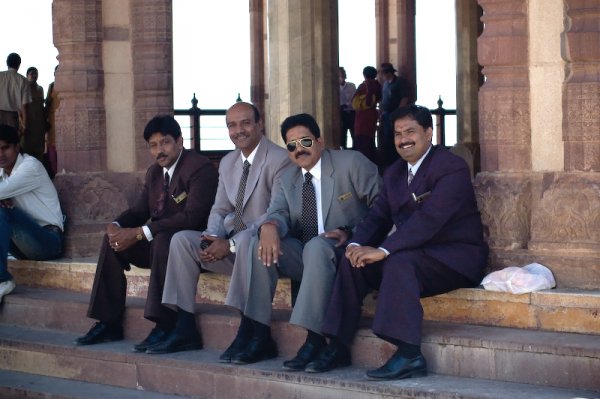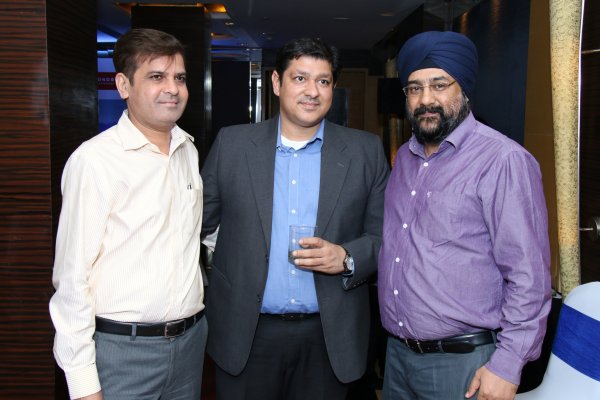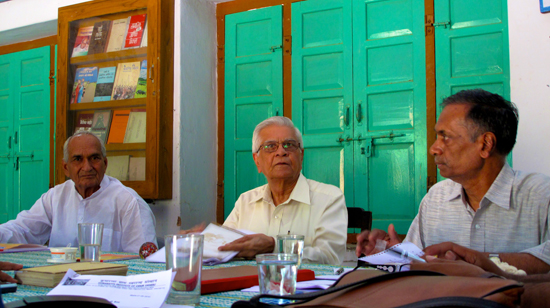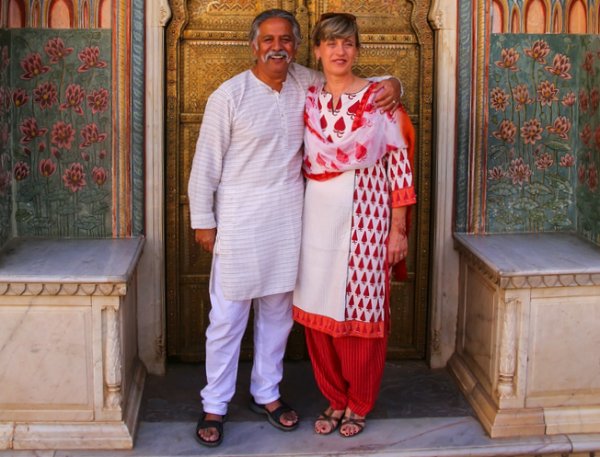Business Culture: Business Attire
Climate and Region
India is a huge country spanning a diverse array of climates—from deserts to alpine tundras and glaciers. Delhi, one of India's most important cities, is located more or less slightly to the north of the middle of the continent, and it can experience temperatures in excess of 40°C (104°F) in the summer.
Most of India experiences four seasons: winter from January to February, summer from March to May, a rainy season from June to September, and a dry season from October to December. During the winter, temperatures can drop to around 10–15°C (50–59°F) in the northwest of the country. Summer can be as hot as 32–40°C (90–104°F) in the interior. If you are traveling during the rainy season, be sure you have appropriate rain gear and an umbrella.
Meetings and Presentations
India's business dress code has changed radically in recent years—but expectations vary widely depending on the region and the industry.
For men, the traditional business uniform is a suit and tie in conservative colors; either light or dark colors are acceptable, but not bright colors or wild prints. Fabric should be natural and lightweight. However, in hot weather, a long-sleeved shirt with a tie and no jacket is fine. In many industries, a tie is not usually worn—ties are most common in formal sectors such as law and finance.
In many areas, a lightweight jacket over a button-down shirt and slacks is acceptable business wear for men. In the IT sector, many people wear T-shirts and jeans to work.
For visiting businesswomen, it’s acceptable to wear pantsuits or suits with long skirts. Skirts should cover the knees and shirts should have high necklines and cover the shoulders.
Avoid wearing leather clothing in India other than shoes. Hindus consider the cow sacred, and may find leather jackets and purses offensive.
Social and Networking Events
Outside of the office, dress codes also vary depending on where you are. In general, people in cities take a more cosmopolitan approach than those in rural areas, and many Indian professionals wear Western-style clothing, with some adaptations. In addition, those in the south tend to be more conservative than those in the north.
When going to upscale restaurants and clubs in larger, more cosmopolitan cities, you can usually wear the same clothing you would consider stylish in the US or Western Europe. Outside of the restaurant, however, women may receive unwanted attention from men if they wear revealing clothing.
Foreign women are particularly vulnerable to accidentally breaking dress taboos India, because dress constraints typically placed on women in India often conflict with Western customs. Both men and women can avoid apparel etiquette mistakes by dressing like the locals. Women have the option of a sari or a salwar kameez. Saris usually come in brilliant colors and can be richly adorned. Many foreigners find it difficult to get saris that fit them well—Indian women tend to be very petite—but you can often get a sari custom-made for you for relatively low cost. There’s a bit of a learning curve in correctly draping the sari, and Indians will immediately notice if you do it wrong—you may need a local to help you the first few times you wear it.
The salwar kameez is less complicated and often a good choice for both business and social events. It’s a long tunic with loose trousers and a shawl. The tunic is loose-fitting but can have a stylish, tailored look, and the shawl is ideal for covering your hair when visiting temples.
For men, traditional dress is the kurta-pajama: a long tunic that reaches to the knees, paired with a loose-fitting drawstring trouser. The kurta-pajama is worn for a wide range of occasions. Among most locals, the kurta-pajama is most commonly seen during traditional and religious festivals.
Both men and women will find that their Indian counterparts will take it as a sign of friendship and respect if they wear traditional Indian dress to either business meetings or social engagements. Women in particular will find a vast difference in how they are treated by Indians depending on how they dress. However, if you choose to stick with Western-style dress, here are a few tips.
Try to wear shoes you can slip off easily—and if you wear socks, make sure they don’t have holes. You may have to slip your shoes off when entering homes, places of worship, and sometimes even shops. If in doubt, check to see if there are shoes by the door.
Jeans and T-shirts are becoming more common for both men and women, and are acceptable attire for casual sightseeing. However, you may find jeans too heavy in the hot climate. Lightweight, loose-fitting trousers or long skirts are usually more comfortable.
In more conservative areas such as Bangladesh, foreign women are especially vulnerable to unwanted attention if they dress inappropriately by local standards. Always make sure your legs and upper arms are covered. Clothing should be loose for both men and women because of the heat, but especially for women because of modesty concerns.
Women should consider bringing a pair of sunglasses when going out in more conservative regions. These will keep you from making inadvertent eye contact with men—even this can be interpreted as a signal of interest.
When sightseeing, consider also that squat toilets are common in India—and it’s much easier for women to use them in a skirt than in pants.
Article written for World Trade Press by Jennifer Williamson.
Copyright © 1993—2024 World Trade Press. All rights reserved.

 India
India 



